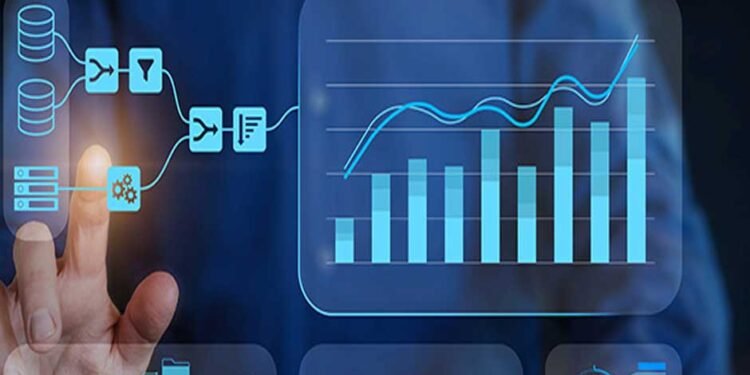In today’s highly regulated and fast-paced business environment, organizations of all sizes face the challenge of navigating complex governance, risk management, and compliance (GRC) requirements. Whether you’re running a small startup or a large multinational corporation, the risks associated with legal non-compliance, cybersecurity threats, or operational inefficiencies can be costly and damaging.
This is where GRC tools—software solutions that integrate governance, risk management, and compliance into a single framework—can play a transformative role. These tools enable businesses to manage risks effectively, ensure compliance with regulations, and create a robust governance framework. Let’s explore how GRC tools can benefit businesses of all sizes, from small enterprises to large corporations.
1. Centralized Management of Risk and Compliance
Within the GRC tools definition, you’ll find that one of the greatest advantages of GRC tools is that they provide a centralized platform to manage governance, risk, and compliance efforts. For businesses of all sizes, this centralization offers a structured approach to manage risks, policies, and regulatory requirements across departments and regions.
- For small businesses, this means that even with limited resources, they can stay on top of regulatory requirements, reduce the risk of non-compliance, and maintain consistent policies across their operations.
- For larger organizations, GRC tools simplify the management of risks and compliance across multiple locations or departments, ensuring that everyone adheres to the same standards and policies.
2. Improved Risk Identification and Mitigation
Risk is a constant in business, whether it’s related to cybersecurity, financial health, operational failures, or reputational damage. GRC tools help organizations to identify, assess, and mitigate risks before they escalate into bigger problems.
- Small businessesbenefit by identifying vulnerabilities early on and mitigating potential risks in areas like data security, vendor management, and compliance. For a smaller company with fewer financial resources, mitigating these risks early can prevent costly penalties or data breaches.
- Larger enterprisescan use GRC tools to handle more complex risk environments, including multiple regulatory frameworks across regions, large supply chains, and extensive operational networks. With automated risk assessments and dashboards, large companies can gain insights into potential risks in real time, allowing them to address issues before they impact the business.
3. Cost Reduction Through Automation
One of the key advantages of using GRC tools is the automation of repetitive tasks such as risk assessments, policy distribution, and compliance tracking. This automation leads to significant cost savings:
- Small businesseswith fewer employees can benefit from workflow automation that reduces the need for manual tracking and oversight. This can help them to stay compliant without dedicating a large part of their budget to hiring specialized compliance staff.
- Larger companies, which manage large volumes of data and more complex compliance requirements, can reduce the operational costs associated with manual processes. Automation frees up time for staff to focus on more strategic initiatives, rather than routine compliance tasks.
4. Enhanced Compliance Management
Regulatory environments are constantly evolving, and non-compliance can lead to hefty fines, legal issues, and reputational damage. GRC tools are designed to streamline compliance by tracking regulatory changes, monitoring compliance performance, and ensuring that organizations remain compliant with both external regulations and internal policies.
- For smaller businesses, keeping up with new regulations can be particularly challenging, especially when they operate in multiple industries or regions. GRC tools help by providing alerts and updates on regulatory changes, ensuring that the business doesn’t miss any important compliance deadlines.
- For larger enterprises, GRC tools can manage compliance with multiple regulatory bodies across countries or industries. The tools track updates in real time and provide automated reporting that’s both transparent and audit-ready, reducing the risk of non-compliance.
5. Improved Decision-Making and Accountability
GRC tools offer data-driven insights into governance, risk, and compliance activities, allowing businesses to make informed, strategic decisions. Whether a business is small or large, having access to accurate, real-time data enables leadership to respond quickly to changes in the regulatory environment or operational risks.
- Small businessescan leverage GRC tools to gain visibility into their risk exposure, helping them prioritize which risks to address first, while also ensuring compliance with local regulations. This proactive approach helps to avoid surprises and enables better decision-making in resource-constrained environments.
- Larger businessesbenefit from advanced reporting capabilities and data visualization tools that offer insights across departments and regions. These insights support better strategic planning and foster accountability among teams, as each department can see how their actions contribute to overall risk and compliance efforts.
Conclusion
GRC tools provide tremendous value to businesses of all sizes by centralizing risk management, streamlining compliance, and improving governance. For small businesses, GRC tools offer affordable, scalable solutions that ensure they stay compliant without requiring extensive resources. For larger organizations, GRC tools help to manage complex, multi-faceted risk environments, ensure compliance with a wide range of regulations, and provide actionable insights for strategic decision-making.
In today’s fast-paced and highly regulated business landscape, GRC tools are no longer a luxury—they’re a necessity for long-term success and sustainability.












